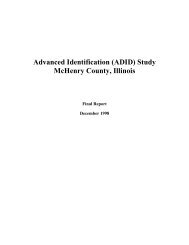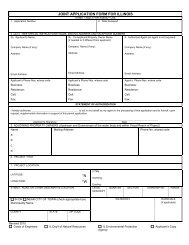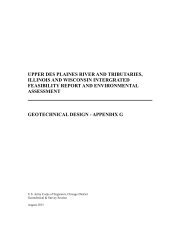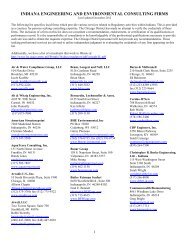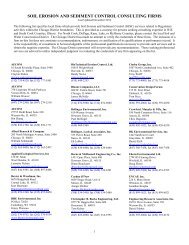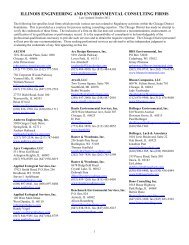Civil Works Policy Guidebook.indd - Chicago District - U.S. Army
Civil Works Policy Guidebook.indd - Chicago District - U.S. Army
Civil Works Policy Guidebook.indd - Chicago District - U.S. Army
Create successful ePaper yourself
Turn your PDF publications into a flip-book with our unique Google optimized e-Paper software.
Specifically Authorized Project Process<br />
Navigation<br />
The U.S. <strong>Army</strong> Corps of Engineers’ Navigation Mission is to provide safe, reliable, and efficient waterborne transportation<br />
systems (channels, harbors, and waterways) for the movement of commerce, national security needs, and recreation. The<br />
federal interest in navigation improvements stems from the commerce clause of the Constitution. Subsequent Supreme<br />
Court decisions have established that the federal obligation to regulate navigation includes the right to make necessary improvements<br />
in waterways. Navigation in harbors and inland waterways is essential to our nation’s transportation system.<br />
The U.S. <strong>Army</strong> Corps of Engineers, as the federal government’s largest water resources development and management<br />
agency, began its <strong>Civil</strong> <strong>Works</strong> water resources program with the navigation mission in 1824.<br />
Flood Risk Management<br />
One of the primary missions of the U.S. <strong>Army</strong> Corps of Engineers is to support flood risk management activities of communities<br />
in both urban and rural areas throughout the United States. To carry out this mission, the Corps operates projects<br />
that reduce flood risk and conducts emergency management activities. At the direction of Congress, the Corps studies<br />
and implements flood risk management measures. Over the years, the Corps has significantly reduced the impacts of<br />
floods by implementing measures such as dams, levees, and floodplain management activities.<br />
With specific congressional authorization, the Corps can evaluate flood problems and potential solutions, and recommend<br />
to Congress whether or not a project should be authorized. This approach is used for larger projects. Typical structural<br />
project features include dams, channel modifications, levees, and other flood control structures. Other non-structural measures<br />
include flood preparedness, warning systems and flood proofing.<br />
Ecosystem Restoration<br />
The U.S. <strong>Army</strong> Corps of Engineers ecosystem restoration mission has two major focus areas: protection and restoration.<br />
Efforts in both areas are guided by the Corps environmental operating principles, which help us balance economic and<br />
environmental concerns.<br />
The Corps works to restore degraded ecosystem structure, function and dynamic processes to a more natural condition<br />
through ecosystem restoration projects and by employing system-wide watershed approaches to problem solving and<br />
management for smaller ecosystem restoration projects<br />
Study Process (Specifically Authorized Studies and Projects)<br />
Before the federal Government can participate in implementing a project, planning studies must be conducted to determine<br />
if the project is feasible and has a Federal interest in cost-sharing. Planning studies are typically conducted in two<br />
phases - reconnaissance and feasibility. A description of these phases is as follows:<br />
3<br />
R



